Imagine standing in a place where history, devotion, and creativity, a place that feels alive with centuries of faith and culture. That’s the magic of the Ayodhya Ram Mandir, a stunning architectural wonder that graces the sacred grounds of Ram Janmabhoomi, the birthplace of Lord Ram. Inaugurated on January 22, 2024, this temple isn’t just a structure; it’s a living symbol of devotion and a testament to India’s rich spiritual legacy. Dive into this article to uncover the captivating history, breathtaking architecture, and cultural significance of this iconic temple.
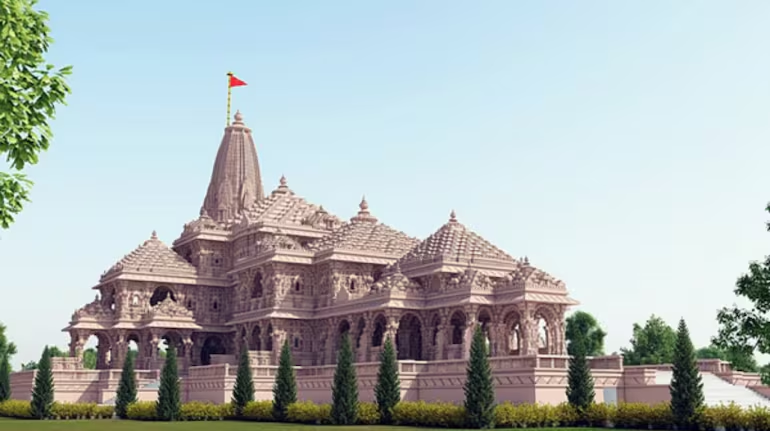
The History and Vision of Ram Mandir
Ayodhya – A City of Timeless Reverence
Ayodhya is a city with legend, a spiritual epicenter that has drawn millions of hearts for centuries. Known as the birthplace of Lord Ram, the embodiment of righteousness and devotion, Ayodhya is deeply woven into the fabric of India’s cultural and spiritual heritage. At its heart lies the Ram Mandir, built on a site revered as Ram Janmabhoomi, a place sacred to Hindus and steeped in both reverence and controversy.
For generations, this land has been at the crossroads of history, carrying the weight of religious sentiments and conflicts. Once home to the Babri Masjid, constructed during the Mughal era, this site became the focal point of a long-standing dispute between communities. The demolition of the mosque in 1992 and the ensuing unrest marked a turning point, leading to decades of legal and social turmoil that gripped the nation.
A Journey of Faith and Reconciliation
The story of the Ram Mandir is also one of hope and healing. After nearly three decades of legal battles, the Supreme Court’s historic verdict in 2019 resolved the dispute, granting the land for the construction of the temple while allocating another site for the Muslim community. This decision became a bridge between the past and a shared future, symbolizing reconciliation and respect.
The journey took a spiritual turn on August 5, 2020, with the Bhoomi Pujan ceremony(Groundbreaking ceremony), a deeply moving moment when faith, tradition, and vision get connected. Attended by spiritual leaders and dignitaries, this event was a wonderful start to building a temple, also it was the beginning of a new chapter, one that transcends conflict and unites us in hope and reverence.
An Architectural Marvel Rooted in Tradition
| Category | Details |
| Key Personnel | Chief Architects: Chandrakant Sompura, Nikhil Sompura, Ashish Sompura |
| Design Advisors: IIT Guwahati, IIT Chennai, IIT Bombay, NIT Surat, Central Building Research Institute Roorkee, National Geo Research Institute Hyderabad, National Institute of Rock Mechanics | |
| Construction Company: Larsen and Toubro (L&T) | |
| Project Management Company: Tata Consulting Engineers Limited (TCEL) | |
| Sculptors: Arun Yogiraaj (Mysore), Ganesh Bhatt, Satyanarayan Pandey | |
| Project Specifications | Total Area: 70 Acres (70% green area) |
| Temple Area: 2.77 Acres | |
| Temple Dimensions: Length – 380 Ft., Width – 250 Ft., Height – 161 Ft. | |
| Architectural Style | Indian Nagar Style |
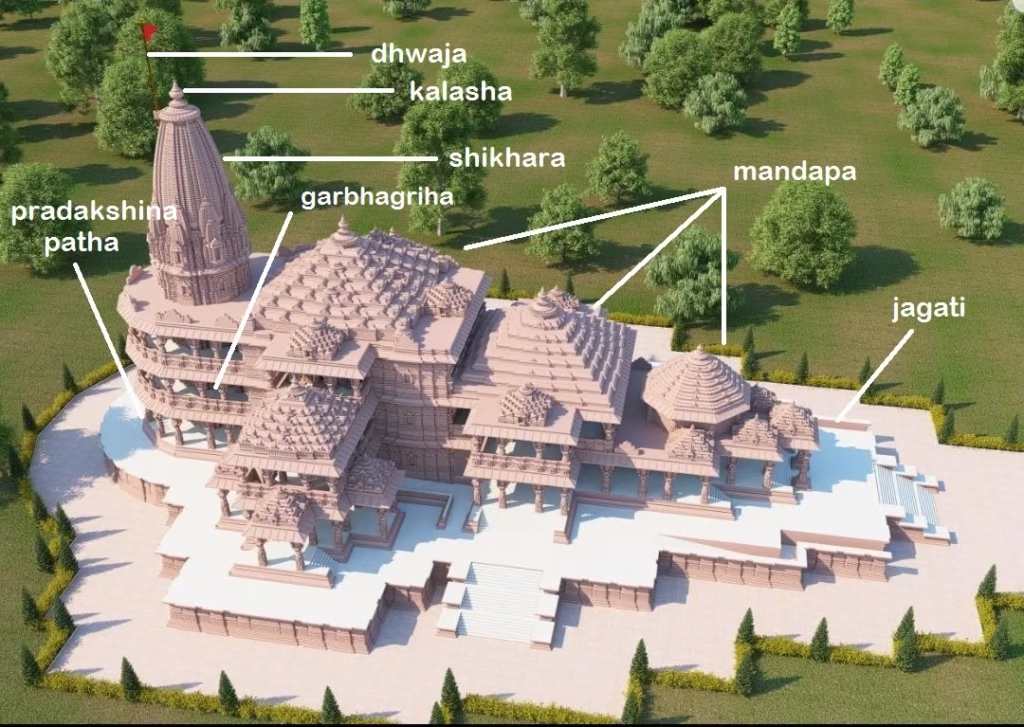
Sacred Sculptures – Stories in Stone
The Iconic Ram Lalla Idol
At the heart of the temple is the idol of Ram Lalla, sculpted from a rare Krishna Shila black stone. Created by the gifted artisan Arun Yogiraj, the 51-inch idol radiates divine grace, capturing the innocence and spiritual majesty of the infant Lord Ram. Its placement in the garbha griha transforms the temple into a sanctified space of devotion.
The Architectural Brilliance of Ram Mandir
A Temple Carved from Dreams
Ram Mandir, Ayodhya is a place where art and devotion merge seamlessly, where every stone seems to breathe life into stories of the past. This place offers, a masterpiece crafted with passion, precision, and purpose. It has been built with a canvas of faith, painted with tricky carvings, towering spires, and sacred symbols that carry the whispers of centuries gone by.
As you step closer, you’ll find yourself drawn to the exquisite details etched into its sandstone walls. The craftsmanship mirrors the essence of India’s ancient temple-building traditions, majestic yet humble, grand yet rooted in devotion. Every pillar stands as a silent witness to the dedication of artisans who poured their hearts into creating something timeless.
The Vision Behind the Stones of Ram Mandir
The temple’s design isn’t just about grandeur; it’s about storytelling. Each carving, each design, carries fragments of the Ramayana, moments of valor, love, and sacrifice that echo through generations. Inspired by the rich traditions of the Nagara style of architecture, the temple is both a nod to the past and a vision of the divine.
When the foundation stone was laid, it wasn’t merely an act of construction; it was the realization of a dream cherished for centuries. As the temple rises, it stands as a bridge between the ancient and the eternal, a symbol of resilience, unity, and devotion that inspires every visitor to look beyond the stone and see the soul of a nation.
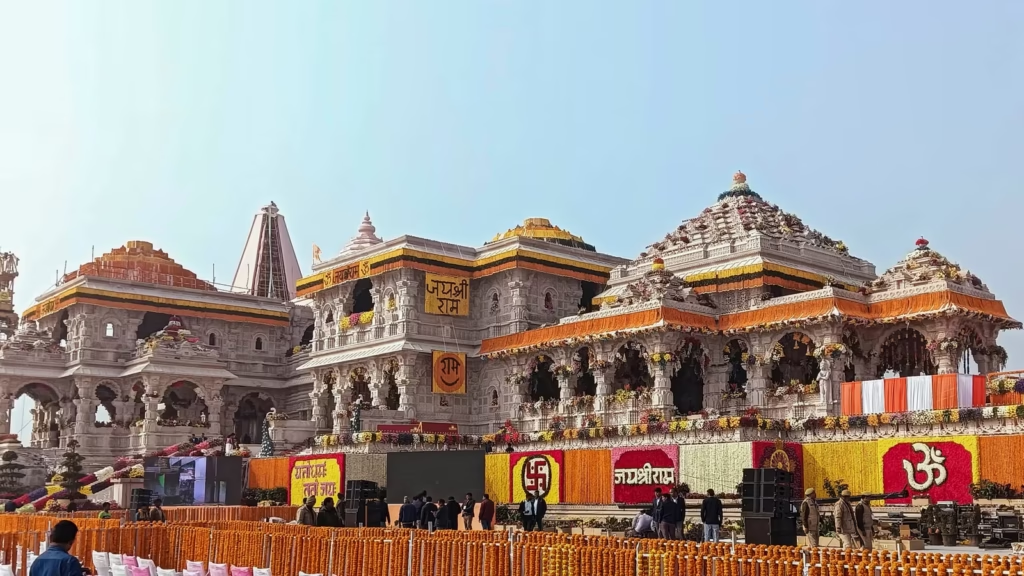
Mesmerizing Carvings and Pillars of Devotion
The temple’s 392 complicated carved pillars serve as storytellers, depicting scenes from the Ramayana. Each pillar is a testament to the artistic genius of the sculptors, narrating pivotal moments such as
- Rama’s Exile- The sadding departure of Lord Ram, Sita, and Lakshmana from Ayodhya.
- Hanuman’s Devotion – Hanuman, carrying the Sanjeevani mountain to save Lakshmana.
- The Rama-Ravana Battle- The epic confrontation symbolizes the triumph of good over evil.
These sculptures are adorned with symbolic designs like lotus flowers, conch shells, and kalashas, each representing spiritual ideals such as purity, cosmic energy, and prosperity.
The Temple Complex – A Blend of Functionality and Spirituality
Modern Infrastructure Meets Sacred Space
Spread across 70 acres, the Ram Mandir complex is a temple of a self-sustaining ecosystem. It includes ramps and lifts for accessibility, sewage, water treatment plants, and an independent power station. Most of the areas are dedicated to green spaces, promoting environmental harmony.
Other highlights of the complex include –
- Temples dedicated to deities like Surya Dev, Devi Bhagwati, and Lord Shiva.
- A museum showcasing artifacts and stories related to Lord Ram and the Ramayana.
- The historic Sita Koop, a well said to date back to ancient times.
- Kuber Tila houses a restored Shiva temple and a bronze statue of Jatayu, the valiant bird from the Ramayana.
A Time Capsule of Legacy and Faith
Beneath the majestic Ram Mandir lies something extraordinary, a time capsule, lovingly crafted to preserve the soul of this sacred temple, the legacy of Lord Ram, and the timeless history of Ayodhya. It’s more than just a metal container; it’s a bridge between generations, a heartfelt attempt to ensure that the essence of this revered site lives on, untouched by the passing centuries.
Imagine a future where someone, hundreds or even thousands of years from now, discovers this capsule buried 2,000 feet beneath the temple. Inside, they’ll find a copper plate, carefully inscribed with stories of devotion, the cultural importance of Ayodhya, and the enduring reverence for Lord Ram. It’s a message from our time to theirs, saying, “This is who we were. This is what we believed. Remember us.”
A Temple Built for Eternity
Engineered to stand strong for at least 2,500 years, the temple’s earthquake-resistant structure is a testament to the vision and dedication behind its creation. Every detail has been chosen with care and purpose, from the ancient Shaligram rocks used to sculpt the idols, stones over 60 million years old, sourced from the sacred Gandaki River in Nepal to the magnificent bell that fills the air with its powerful chime.
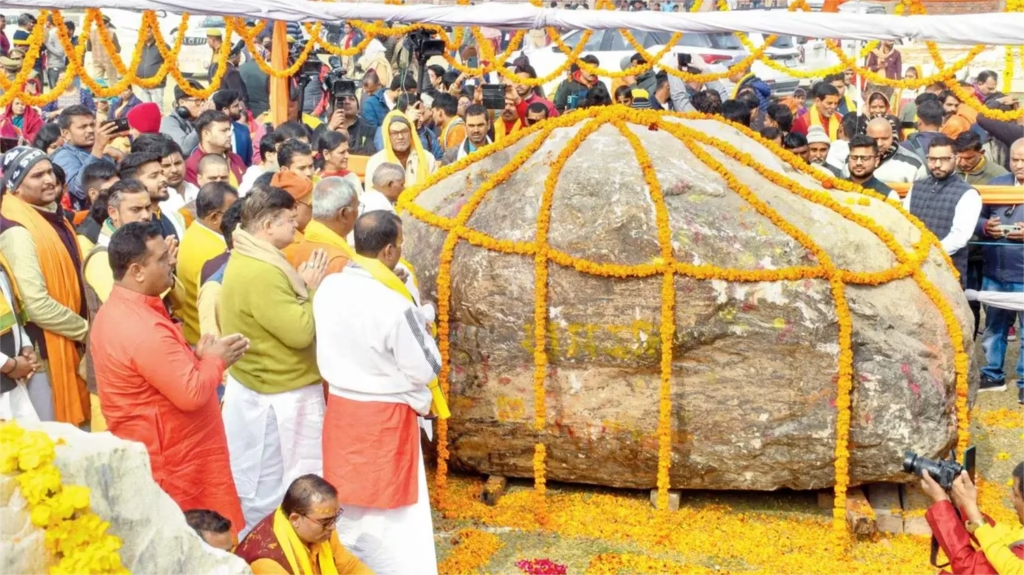
This bell, crafted from Ashtadhatu, a sacred alloy of eight metals including gold and silver, weighs an astounding 2,100 kilograms. Its resonance travels up to 15 kilometers when it rings, carrying the temple’s divine presence far and wide.
A Symbol of Devotion
Every stone, every sculpture, and every sound of the Ram Mandir carries meaning. The temple is a story told through architecture, an eternal link between the past, the present, and the future. It’s a place that reminds us of who we are, what we hold dear, and the legacy we wish to leave behind.
Standing before this temple, you don’t just see history, you feel it. And through its time capsule, its resilient design, and its sacred materials, the Ram Mandir ensures that the story of Ayodhya and its devotion to Lord Ram will live on, forever carved in the heart of humanity.
Famous temples in Ayodhya near Ram Mandir
While the Ram Mandir is a must-visit, the city’s charm unfolds fully when you wander into its many other revered sites. Here’s a glimpse of the temples and sacred spaces that make Ayodhya a spiritual paradise.
1. Hanuman Garhi – Strength in Devotion
Perched atop a gentle hill, Hanuman Garhi welcomes you with its vibrant energy and breathtaking views. This temple is dedicated to Lord Hanuman, the devoted protector of Lord Ram, and is believed to grant strength and courage to those who visit.
The grand statue of Lord Hanuman at the entrance feels like a guardian of the city, and the temple’s lively atmosphere instantly fills you with a sense of community and faith. Climbing the steps to this sacred spot is a journey worth taking, for the blessings and the stunning view of Ayodhya that awaits you at the top.
2. Kanak Bhawan – A Temple of Love
Kanak Bhawan, often called the “House of Gold,” is a heartwarming tribute to the love of Lord Ram and Goddess Sita. According to legend, this temple was gifted to Sita by her mother as a symbol of their divine bond.
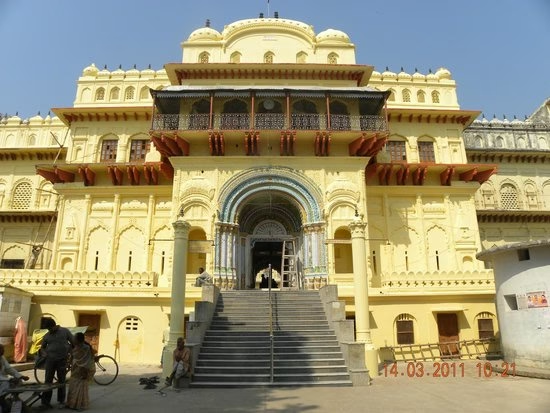
The colorful Paintings and carvings here tell stories of love and devotion, creating a peaceful yet awe-inspiring space.
3. Treta Ke Thakur – Where History Speaks
On the serene banks of the Sarayu River stands Treta Ke Thakur, a temple with deep historical significance. It is believed that Lord Ram performed the Ashwamedha Yagna here after returning victorious to Ayodhya.
The temple’s sculptures and inscriptions take you back to those epic times, immersing you in stories of valor and dharma. The calm surroundings make it a perfect place for reflection and meditation, offering a deeper connection to Lord Ram’s legacy.
4. Nageshwarnath Temple – Lord Shiva’s Abode
For those drawn to the power of Lord Shiva, Nageshwarnath Temple is a must-visit. This sacred site, where Lord Ram is said to have installed a Shiva Linga before his journey to Lanka, carries a profound spiritual energy.
The temple is especially lively during the festival of Shivratri when its ancient walls come alive with the chants of devotees.
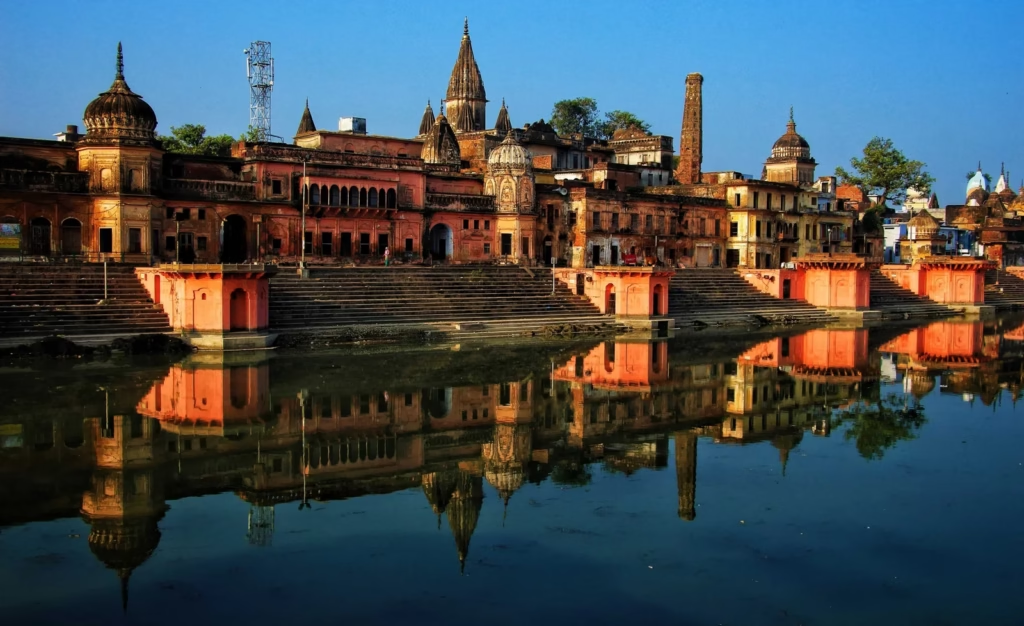
5. Swarg Dwar – The Gateway to Heaven
Swarg Dwar, meaning “Gateway to Heaven,” is a site that deeply resonates with the legend of Lord Ram’s ascension. The temple complex, adorned with carvings from the Ramayana, creates a sacred space where stories of devotion and divinity come alive.
Devotees visit this serene spot to seek blessings and reflect on the deeper meaning of life and beyond.
6. Ram Ki Paidi – A Sacred Dip in the Sarayu
Ram Ki Paidi is a spiritual gem of Ayodhya. This series of ghats along the Sarayu River offers devotees a chance to bathe in its holy waters, believed to cleanse the soul and refresh the spirit.
As the sun sets, the ghats light up with shimmering diyas, casting a magical glow over the river. It’s a sight that feels straight out of a dream, drawing you into a moment of peace and gratitude.
Timeless Lessons from the Ram Mandir Construction – A Modern-Day Epic
From blending ancient practices with cutting-edge technology to honoring the country’s diverse cultures, this temple stands as a testament to the values that bind us all.
Rooted in Tradition and Innovation
Skilled artisans and workers have brought centuries-old techniques to life, crafting each detail with care and respect for the past. This construction is a living, breathing embodiment of India’s rich cultural heritage. The ancient craftsmanship is beautifully intertwined with modern methods, creating a structure that honors the past while embracing the future.
Yet, innovation isn’t left behind. To preserve the legacy of this grand project, the construction process itself has been documented using the latest technologies. Techniques like 3D mapping and virtual reality provide a window into the temple’s creation, allowing future generations to step back in time and explore the journey of its making in ways never before possible.
Unity in Diversity
The Ram Mandir’s construction embodies something deeper: the power of unity. People from all walks of life, from different faiths and backgrounds, worked side by side to bring this dream to life. It’s a beautiful reminder of the spirit of secularism—how shared goals can bring us together despite our differences. This collaboration isn’t just about building a temple; it’s about building a shared future, one that celebrates the strength of our diversity.
A Symbol of India’s Cultural Harmony
During the Bhoomi Pujan ceremony, the symbolism of unity was brought to life in the most meaningful way. Holy water from 150 rivers across India was poured onto the temple grounds, not just as a blessing, but as a reflection of India’s heart, its cultural diversity, and harmony. This ritual reminded us of the threads that bind us together, weaving a colorful story of a nation united in its diversity.
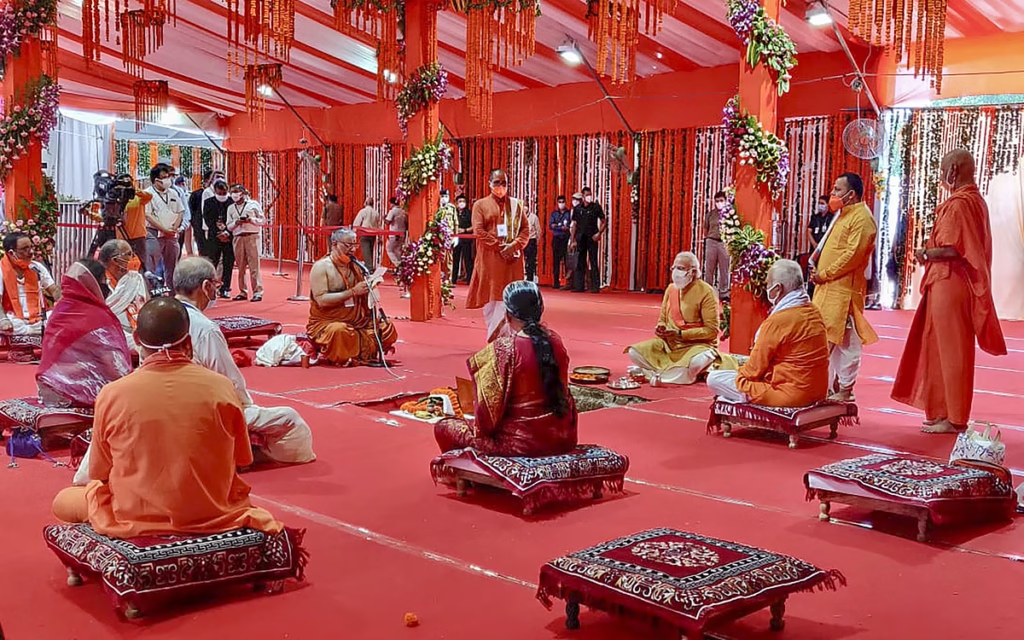
Making the Temple Accessible for All
Thoughtful features, like ramps and lifts, have been added to ensure that everyone, regardless of age or ability, can experience its sanctity. This welcoming approach speaks to a broader vision, creating spaces where all people, no matter their circumstances, can come together in devotion and community.
Building with Nature in Mind
The temple’s construction is not just about its physical form, it’s about caring for the world around it. Over 70% of the temple’s surrounding area has been preserved as green space, fostering biodiversity and ensuring the temple blends naturally into its environment. Locally sourced materials and energy-efficient designs have minimized its environmental impact, creating a space where devotion and nature coexist in perfect harmony.
Protecting the Legacy for Future Generations
The temple also looks to the future with a unique gesture: a time capsule, placed beneath the temple, holds a record of this incredible journey. It’s a beautiful way to preserve the story of the Ram Mandir for generations to come, ensuring that the significance of this sacred site will never fade into history.
A Transparent Journey
Transparency has been at the forefront of this project. Throughout the construction, there’s been an open channel of communication, keeping devotees and the community informed at every step. This sense of involvement has fostered trust and a sense of ownership among those who have supported the temple, making its creation feel like a collective achievement.
Building Bridges Beyond Borders
In a remarkable gesture of international solidarity, soil from Thailand’s Ayutthaya was sent to Ayodhya for the consecration of Lord Rama’s statue. This beautiful symbol of cultural and historical ties between India and Thailand reflects the shared reverence for Lord Ram. Ayutthaya, historically linked to Ayodhya, carries a rich legacy of kings known as ‘Ramatibodhi’, an enduring tribute to Lord Rama.
This act of spiritual camaraderie goes beyond mere gesture; it’s a reminder of how deeply the story of Lord Ram resonates across the world, uniting cultures and nations through shared devotion.
Highlights of Ram Mandir and Ayodhya’s Rejuvenation
- Ram Temple Transformation: Ayodhya is evolving into a modern spiritual and cultural hub with over 3 lakh visitors expected daily.
- Massive Investment: Over 200 development projects worth ₹30,923 crores are underway.
Infrastructure and Connectivity
- Improved Facilities: Upgraded roads, bridges, sewage systems, and utilities to meet tourism demands.
- Airport: Development of Maryada Purshottam Shri Ram International Airport for better accessibility.
- Railway Upgrades: Modernization of Ayodhya Junction with six Vande Bharat and two Amrit Bharat trains.
- Road Expansions: Widening key roads like Ram Janmabhoomi Path, Bhakti Path, and Ram Path Corridor.
- National Highways: Enhancements to NH-27, including the Lucknow-Ayodhya section and Ayodhya bypass.
Beautification and Cultural Revival
- City Aesthetics: Restoring ancient ashrams, temples, and ponds to make Ayodhya “the most beautiful city by 2024.”
- Riverfront Development: Revamping ghats and creating a 7 km stretch along the river, inspired by the Gomti Riverfront.
- Luxury Cruise: Launching a cruise service from Naya Ghat.
Residential and Tourism Enhancements
- Modern Housing: Greenfield Township and Vashishtha Kunj Residential Projects for contemporary living.
- Tourism Boost: New theme parks, resorts, and hotels to enhance visitor experience.
Ayodhya’s transformation honors its rich heritage while embracing modern infrastructure, making it a global pilgrimage and cultural destination.
Cultural and Economic Impact of Ram Mandir
- The Ram Mandir is driving Ayodhya’s transformation into a global spiritual and cultural hub.
- Major developments include widened roads, modern rail networks, and the upcoming Maryada Purushottam Shri Ram International Airport.
- Tourism, cultural preservation, and social service initiatives have flourished around the temple.
First Anniversary of Ram Mandir
- Event Date: Main celebrations from January 11 to 13, 2025, marking the first anniversary of the temple’s consecration on January 22, 2024.
- Celebrations: Includes religious rituals, cultural programs, and prayers to honor Lord Ram.
- Participation: Devotees from across the country will gather for this grand spiritual and cultural event.
- Atmosphere: A mix of reverence, joy, and devotion, making it a memorable experience for all attendees.
Conclusion – Ayodhya, Ram Mandir, and many more
Ayodhya is a beautiful destination that stirs your soul and strengthens your faith. Each temple, each story, and each moment in this sacred city invites you to discover the divine in your own way. Whether you’re here for devotion, history, or a bit of both, Ayodhya promises to leave you deeply moved and longing to return.
Whether you seek spiritual solace, artistic inspiration, or a glimpse into India’s glorious past, the Ram Mandir offers an experience that is both profound and unforgettable.
_______________________________________
Just as the Ram Mandir in Ayodhya captivates visitors, the Taj Mahal in Agra stands as a symbol of love and elegance. Uttar Pradesh is truly home to these iconic landmarks. If you’re eager to explore the stunning art and architecture of the Taj Mahal, be sure to check out the link below.
Taj Mahal and Stone Inlay Art: Discover Top 5 Indian Art
Also, visit our FolkCanvas for more exciting content that celebrates the rich world of folk art and creativity.

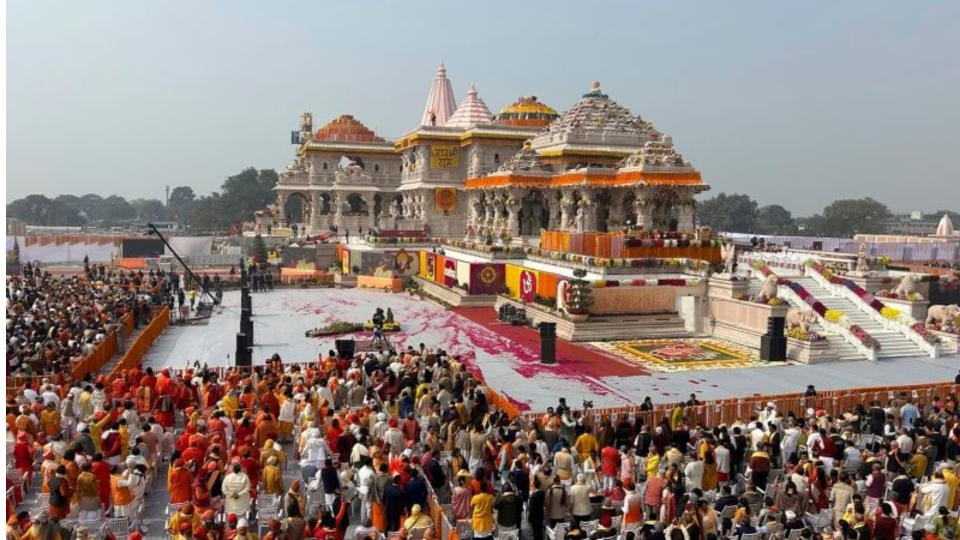

Leave a Reply